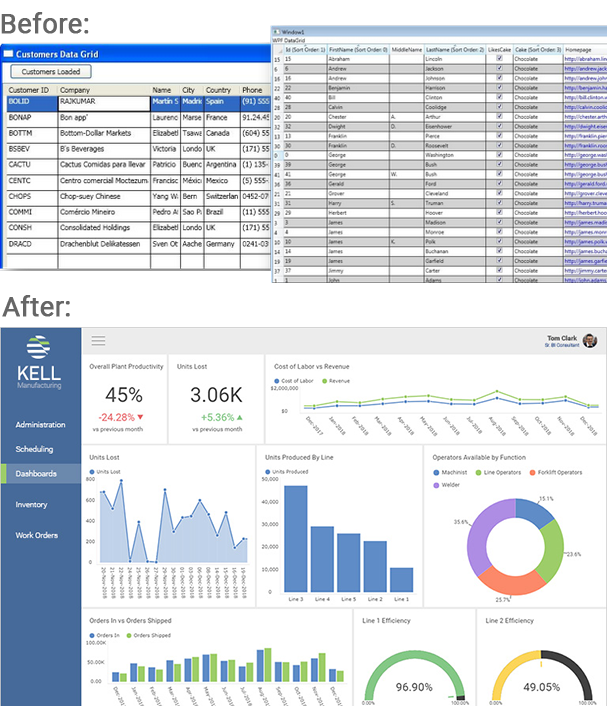
Scriptly Helps Pharmacies Identify Trends in Real Time with Reveal

What is App Modernization? App modernization is the process of taking older, legacy applications and updating their platform architecture to take advantage of modern systems and features. A great example of app modernization is adding embedded analytics to your application. Embedded analytics help add value to your applications by embedding real-time reporting, interactive data visualization and advanced analytics more quickly than building them yourself. Make complex information comprehensible […]
App modernization is the process of taking older, legacy applications and updating their platform architecture to take advantage of modern systems and features.
A great example of app modernization is adding embedded analytics to your application. Embedded analytics help add value to your applications by embedding real-time reporting, interactive data visualization and advanced analytics more quickly than building them yourself. Make complex information comprehensible by presenting it visually, giving users insights to help them drive smarter, faster decisions.
When we are talking about application modernization it is essential that we start with the importance of customer experience and user experience. Over the last few years, these concepts have been molded together to the point of having the same outcome. These are two of the most important areas to keep in mind when building your application.
So, what benefits do you get from focusing on customer and user experience?
So how does customer experience and app modernization tie together?
Although legacy applications – software that is outdated – might still work and serve a purpose, by not modernizing you are hurting your software.
Your applications need to help your end users understand their data faster, easier and in more meaningful ways. Data visualizations help make data more consumable and help users make decisions and tell a more compelling story. After all, as humas we are programmed to think visually:
This puts heavy emphasis on the customer experience when providing embedded analytics to your end users.
Just think about task switching. When you can provide users with in-context analytics that enable your user to make immediate decisions that are based on the information and screen they are working on at the moment, you are increasing their satisfaction tremendously. So, just some of the benefits you get with app modernization are:

So far we’ve described the positive impact of modernizing your applications, but how can you take action? We narrowed it down to 5 easy steps!
These answers will make a difference in the UX choices and how you approach the modernization.
For a more indepth look at how to modernize your apps along with a live demo, watch our webinar, 5 Steps to App Modernization.